|
Grab a glass of something tasty and join me while I chat with Big Blend Radio about the importance of a well trained frontline staff and more.
http://blendradioandtv.com/index.php/listing/hilarie-larson-wine-industry-insider/
0 Comments
Who could resist an opportunity to speak at a conference in France? And in Champagne? Especially one focused on ‘wine tourism’? Certainly not me! So, this past April,with PowerPoint loaded and notes in hand, I set out from Los Angeles to Reims, France and the International Wine Tourism Conference 2015.  My seminar was entitled ‘Promoting your Wine Tourism Business Through Sales, Service & Knowledge’ a topic on which I have spoken several times before. I wondered if my over-riding theme of ‘the experience’ and how it influences everything from your website, to who you hire and how you train them, would be applicable in a global setting. I need not have worried. Not only was the concept mentioned, it practically became a mantra over the two days of the conference! It seems I am not alone in emphasizing how vital it is for our industry to focus on this most essential element if we want to engage with our guests before, during and after their visits! The schedule of seminars was jam-packed with information on destinations such as Georgia, India, Hungary, Argentina, the Jura, England and Chile. Our hosts, the wonderful wine region of Champagne, were naturally included as was Catalonia, the site of next year’s conference. We learned how wine tourism is on the rise, that guests want an ‘experience’ that is authentic, not manufactured. We discovered how regions use their local history, food and culture to engage and capture the visitor’s imagination and that wine, food and travel form the perfect, desired trifecta! We explored the realms of Social Media and the Internet – how to use it to find and develop loyal visitors to your region. We also discovered that although many destinations and suppliers understand the importance of platforms such as Facebook, Twitter, Instagram and others, they don’t take advantage of it’s huge and growing market reach. Ah, more work to be done! Personally, I learned what a ‘small world’ our wine tourism community can be. That we all face similar challenges and dilemmas and that even though some destinations may appear more ‘advanced’ than others when it comes to the business of wine tourism, we all have much to share and learn. Yes, we could connect through Skype or on-line conferencing. But being in a room of like-minded professionals somehow makes it all more exciting, more relevant. It reminds you why you got into this line of work in the first place.
Dare I say it, but the conference was, in itself, an ‘experience’ and in the end, that’ is what it is all about! As someone who helps wineries recruit and train their teams, I spend many a glamorous hour combing through resumes.
If you are looking to secure an interview for a tasting room position, or any other winery opening, here are a few tips. When you reply to an advertisement, read it first. If the job description mentions wine knowledge as a requirement, this means that you should be able to speak effectively and informatively on the subject. The mere fact that you ‘only like reds cause whites are gross’ or think ‘all roses are sweet’ does not equate to ‘wine knowledge’ and will not get you through to the next interview. If the listing is for a ‘full time position’ then please do not apply if you’re only available a few days each week or select hours. You are wasting my time and yours. Inversely, if the job is for ‘part-time’ it means exactly that. If the job is for, say, Tasting Room Host, please don’t tell me in your cover letter how much you want to work in Events. I will not call you. Do yourself a big favor and don’t use a generic cover letter that contains phrases such as ‘your company’ or ‘your industry’. It’s a dead give away that you probably reply to every new job posting, regardless of the ‘industry’. When you attach your resume, it helps immensely if the file is saved with a name - something other than ‘my resume’. This information tells me you are disorganized, and don’t have the qualifications for the job. May I suggest your First and last name – that would be helpful. And your resume? There really is no excuse not to have a well-formatted, organized resume. Can we say ‘template’? Here are a few other tips on this topic: Do not send documents in ‘Word’ so I can see all your strange composition issues! How hard is it to save the document as a PDF? Much more professional. Do not send a photograph of your resume. Really, a jpg? Spell-check. It’s there so use it please. That’s all I have to say on this matter. Unless the posting specifically requests a photograph, you really don’t need to add one – especially if it shows you in skimpy attire or with a drink in your hand. Make sure your voicemail box is not full. Nothing further needs to be said. Don’t bother telling me in your cover letter that you ‘are looking for a career in the wine industry’ if you think you won’t have to stand for long hours, answer the same questions repeatedly, be on time, follow instructions and smile when you don’t really feel like it. Yes, the wine business is wonderful – I wouldn’t choose anything else – but it is a business. My clients want people who will be dedicated, eager to learn, courteous, respectful and most of all, fun.  photo credit: katerha photo credit: katerha The end of one year and the fresh new beginning of another is often a time of reflection. And it's no different for your winery Tasting Room. Yes, you'll no doubt be pouring over year-end statistics soon enough, but there's more to reflect upon than numbers. Consider the plans you made at the beginning of last year: what worked and what didn't? What surprises came your way and what expectations never materialized? When you ponder the ups and downs of your wine club memberships, pause to think-why? Are you treating your most loyal customers with the love and respect they need to remain devoted? This is a terrific time to do a bit of brainstorming and come up with some new and novel ideas to enhance the membership experience. Remember, customer loyalty is like a marriage - it's ever evolving and takes a bit of effort to succeed. What about having a contest for your Tasting Room staff to see what terrific incentives they might have? After all, no one spends more 'one on one' time with members than your front line hospitality staff. They are certain to come up with some novel ways to show your appreciation. This is also a great time of year to re-evaluate your CRM software. Does it still fit your needs or perhaps you need a bit of training in order to get the most out of what you already have. Your data base is such an invaluable tool to keep track of your customers habits, likes and dislikes. Take advantage of that information to continually strengthen the bond. Reward your longest standing members with something special in the new year and on landmark dates such as birthdays and anniversaries. How about some free shipping on their birthdays? Or re-orders of club shipment selections. The possibilities are almost endless. So grab a glass of some Holiday cheer and start planning for an amazing New Year.  At times, writing and teaching about wine can be a solitary experience. That's why I was happy to engage in some human to human contact at the recent Wine Tourism Conference held in the welcoming wine country town of Paso Robles, California. As with most events of this kind, there was an often dizzying array of seminars to choose from, people to meet and re-connect with, and information to absorb. Here is a quick and dirty rundown of what I considered to be the main take-aways, many of which were repeated over the course of the conference.
 A visit to Roger Sabon, Chateauneuf-du-Pape. A visit to Roger Sabon, Chateauneuf-du-Pape. With a new year on the horizon, it's time to get organized. Since I began posting on the Northwinds Wine blog in the summer of 2011, many things have changed - in a variety of exciting ways! I have been given the opportunity to write for wonderful sites, such as Wine Folly, International Wine Accessories Blog, Examiner.com and Tripatini. The International Food Wine and Travel Writers Association deemed me an "Emerging Writer" worthy of note, encouraging me to travel and share my experiences. Training is still a large part of what I do - working with some terrific wineries to get their tasting rooms up and running or bringing new team members up to speed. And speaking at events such as the San Diego International Wine Show and the Wine Tourism Conference have only increased my enthusiasm for helping to create well informed and gracious ambassadors of the wine industry. In that light, I have decided to devote the website blog to more 'training-centric' posts, focusing on service, sales and education for all. My pieces that are more travel/wine or food/wine oriented will be posted on the other sites that have welcomed me into their folds. I will continue to list links on the "articles by" page here on the website. I hope you will continue to follow me on my adventures. There is a speaking engagement in the Champagne region of France in the Spring, lots of wines to be sipped and shared and stories to tell. And it's all more fun with your company! I am really excited to be involved with DTC Wine Workshops. Their concept of providing a 'holistic' approach to helping wineries grow and develop their customer base is right in line with what we believe at Northwinds Wine Consulting. Here is my first webinar for the group, all about finding your identity as a winery and sharing it with your guests through educated, hospitable team members and fantastic service. What better way is there to retain your customers than showing how much you value their loyalty? If you'd like to view other webinars in the series or find out more about this exciting new wine industry organization, please visit the website. Oh, by the way, this webinar is more fun if you pair it with a glass of wine!  Crozes-Hermitage vineyards of Domaine Michelas Saint Jemms Crozes-Hermitage vineyards of Domaine Michelas Saint Jemms We headed north on the A7 Autoroute, leaving the ‘galet' filled vineyards of Chateauneuf-du-Pape behind us. Ahead, lay the towns of Orange and Montêlimar. The expansive vineyards of the south gave way to orchards and countryside. As we approached the village of Valence the terrain changed. The steep, terraced, hillside vineyards told us we had reached our destination - and the holy grail of Syrah - the Northern Rhone. Our destination was the town of Mercurol not far from Tain’Hermitage. We pulled into the drive of Domaine Michelas Saint Jemms, a smaller family owned and run establishment and everyone, including the winery dog Tina, were there to greet us. What makes Michelas Saint Jemm unique is that they produce wines from not just one AOC of the Rhone Valley, but several: Cornas, St.Joseph, Crozes-Hermitage and Hermitage. They are also one of the the oldest privately operated wineries in the area and the oldest family owned winery in Crozes-Hermitage. And this is truly a family affair. The property itself goes back to 1861 but wasn’t really developed until 1961 when Robert and Yvette Michelas took charge. Today, three sisters, Sylvie, Florence, and Corine, work alongside brother Sebastien and other family members, oversee the 50 hectares (just over 123 acres) of vineyards and production of 150,000 bottles (12,500 cases). Of course, the prize AOC is Hermitage - a region known to every lover and collector of French wines. The parcels (three noncontiquous parcels total 1/2 hectare/ 1.23 acres) were acquired years ago when a family friend, unable to keep the land in his family’s hands, asked Robert Michelas if he would be interested in purchasing the vineyards. Knowing that opportunities to purchase these scarce and highly prized blocks were few and far between, he jumped at the chance and the rest is Michelas Saint Jemms history!
We were soon loading into the vineyard vehicles and heading away from the winery and through the countryside. We climbed higher and higher into the hills of Crozes-Hermitage, past crumbling castle ruins and row upon row of flowering grape vines.  Horses-not tractors- are used in these steep vineyards Horses-not tractors- are used in these steep vineyards As we soaked in the wonderful vistas, Sylvie explained that, in 1973, Michelas Saint Jemms become an independent winery (rather than being associated with the local co-operative). Sébastien, who is in charge of all the vineyards, set about improving the quality of the fruit and several years ago, they qualified for the new H.V. E. certification. Haute Valeurs Environnmental (High Environmental Vaules) is a newer certification that emphasizes working in harmony with nature. Biodiversity is encouraged “ If there are trees, leave them. If there are grasses, leave them - don’t cut.” said Sylvie. “Birds and animals are welcome!”. We sampled several wines in this gorgeous setting including the 2012 Crozes-Hermitage Blanc, a blend of 60% Roussanne and 40% Marsanne, half of which is oak aged with the balance in stainless.Soft toast on the nose but it’s all about minerals and fruit on the palate with acacia and a touch of marzipan. Sorry to say that this wine, as well as the refreshingly fruity and fresh Crozes-Hermiage Fleur de Syrahne that we sampled next, are not available in the U.S., which I personally feel is a shame as they are delicious and both very food compatible and would be appreciated by the North American palate. Luckily, the 2011 Crozes-Hermitage ‘Signature’ Rouge is! With fruit grown on chalky-clay soils, this is an aromatic Syrah. Fresh black fruit aromas are both fruity and meaty making this a versatile sipper or dinner companion. At at suggested retail of $25 USD it is a wonderful introduction to the signature grape of the Northern Rhone. It was now lunch time. In France, this a ‘sacred’ part of the day - a time to stop and recharge with food, family, and, naturally, some wine. We were very fortunate to be invited to share this time with the family (including Tina and Emmi the cat) and soon discovered they had prepared a veritable feast of traditional fare reflecting their Drome and Ardeche regional roots.
It was now time for the next course - a local specialty of the pre-Alps region of Grenobles - Ravioles du Dauphiné. These tiny little pockets of pasta are filled with cheese, herbs and cream. Sylvie served these in wonderful ceramic dishes which, as with the other artisan table wares, were produced ‘just down the road’. Although our ravioles were topped with local Extra Virgin Olive Oil and fresh basil from the garden, we were told they were also delicious baked in a gratin with courgettes (zucchini). I can only imagine! The next selection of wines, are, I’m sorry to say, not available in the United States but would give any wine lover an excellent excuse to visit the winery! Under the ‘Terres d’Arce’ label, Michelas Saint Jemms bottles all four AOC - Crozes-Hermitage, Saint Joseph, Cornas and Hermitage and are the only independent producer to do so. These are their ‘prestige’ bottlings - what an New World winery might call their ‘Reserve’ tier, showing the distinctive character of each terroir and its interpretation of the Syrah grape. These wines consistently score highly in such respected publications as the ‘Hachette Wine Guide’ and the ‘Gilbert & Gaillard' wine magazine, not to mention Robert Parker’s ‘Wine Advocate’. We were thrilled to try all the offerings, including the Hermitage (of which they only produce 600 bottles!) and tried our best to convince everyone, especially Sales Manager Laurent Gomez, that they should make these Rhone treasures available stateside! No French meal is complete without ‘a little something’. A large dish of exquisite local peaches and apricots appeared (Hermitage is equally famous for the delectable stone fruit, it seems) plus a big platter of ripe red cherries. Another regional delicacy appeared on the table. A large, round yeast bread, ‘Pogne de Romans’ which, translated from Old French, means ‘by hands’. Similar to a brioche, these are made for special occasions and holidays and are lightly scented with orange blossom water. This particular pogne came from an old and revered bakery, L. Ronjat in the village of Saint Donat sur l’Herbasse, where they have baking since the 18th century. Too soon, it was time for the family to return to the wines and for us to get back on the Autoroute. It had been an extraordinary day, filled with the wonderful ‘connections’ that only wine can make. We felt so blessed to share in the traditions of the region and now, whenever I think of the Northern Rhone Valley I smile, remembering the day, their gracious hospitality and wines made with true love, respect, passion and joie de vivre.
Epilogue: As I was writing this post, I received a message from Jeanne. She was preparing to go and help out with the Syrah harvest in the Cornas vineyards of Domaine Michelas Saint Jemms. “Pictures, please!” I requested. How fitting that we can now see, full circle the literal ‘fruits’ of their efforts and the continuation of Vendage 2014. All photos below courtesy of Jeanne Peron, Benson Marketing who was kind enough to arrange this visit. Merci!  Wines from the Czech Republic are a secret no more. Wines from the Czech Republic are a secret no more. Do you know that a wine from the Czech Republic was selected the “Best White Wine” at the prestigious 2014 San Francisco International Wine Competition? NOTE: All wines tasted at this event were provided by the sponsoring wineries. Please see my page ' Submissions, Reviews, Invitations & Disclaimers'. It seems the ‘cat is out of the bag’ when it comes to the quality and character of these delicious wines from eastern Europe, thanks to the Petr Vacenovsky 2013 Riesling winning double gold and best of show at the competition. Now, it used to be when I thought of this historic nation, I would think of handcrafted crystal, intricate garnet jewelry, a treasure-trove of culture and architecture, and of course, Pilsner, but after having an opportunity to try a selection of Czech wines, I can now add vino to the list. Viticulture and wine are nothing new to this region of the world. Like many parts of Europe, the Romans brought the vine to the area and are credited with introducing Grüner Veltliner and Welschriesling which are still grown today. During the Middle Ages the industry really took hold mostly due to the power of the monasteries. Importing grapes from France and Germany, they began to establish vineyard designations and winemaking rules as far back as 1309. Although the territory was conquered and occupied over the centuries, vineyards here supplied wines for the aristocracy of Europe until phylloxera destroyed much of the vines at the turn of the 19th to 20th century. Today, the Czech Republic has a small but thriving wine industry. The majority of the vineyards (96%) are located in the southern region of Moravia ( Mo-rahv-EE-ah) which is just north of the well known Austrian wine region, Weinviertel. A small number of vineyards may be found in the northern region of Bohemia which is on the same latitude as the Rheingau area of neighboring Germany. The nation itself is landlocked and the terrain is predominately rolling hills, with the White Carpathian mountains sheltering the wine regions of the south. Soil types range from rich dark clay to gravel, marl and limestone. There are are about 18,000 winemakers in the country - many of them extremely small with production of only a few barrels - continuing the age old traditions of local winemaking. They make wines for their own palates - bone dry and full of crispy minerality with hints of spiciness. It’s not uncommon to see a group of local winemakers getting together on a Saturday afternoon to sip and critique each others product! The majority of production is white wine - around 60% - with red and rosé making up the balance. With larger producers looking to export more of their product, they are now producing wines from dry to off dry as well as the popular sweet, dessert ’straw wines’ . (For more on this wine style, click here) Many of the grapes grown here are familiar names:, Chardonnay, Pinot Blanc, Pinot Gris, Pinot Noir and Cabernet Sauvignon. Just as fabulous, but perhaps not household names (yet!) are: Müller-Thurgau, Blaufränkisch (Frankovka), St. Laurent (Svatovavnnecké) and Welschriesling (Ryzlink Vlassky). A system of quality designation, based on the French AOC and Austrian DAC, regulates things such as where the grapes are grown, hand harvesting, oak barrel usage, alcohol levels and many other factors. This ensures that the wines labeled with a regional VOC (Vina Originální Certifikace) mark have a guaranteed level of quality and reflect the best attributes of Czech wines.
There’s a distinctive feature that can’t go un-noticed - the absolutely captivating labels on the Vino z Czech vintages. Every one bears artwork by the famous Art Nouveau artist Alphonse Mucha. These sensuous depictions of female beauty are not only eye-catching, but also reflect the artistic integrity of the wines themselves. (For more on the Art Nouveau movement in the Czech Republic, see below)  Spicy Grüner Veltliner Spicy Grüner Veltliner Our first wine was the Grüner Veltliner Michlovsky 2011 ($16) - Fragrant dried apricot, sweet grass and white pepper with ripe red apple and lemon balm on the palate - showing a slight hint of effervescense. Clean and minerally, it paired well with a spicy crab salad and the bacon and onion tart.  Wine & Food - perfect! Wine & Food - perfect! Next, Welschriesling Spielberg 2013 ($23). This variety is not related to the famous Riesling grape, even though the names are similar. All white flower blossoms, sweet grass and honey with touches of pepper and lemon peel. Great paired with that onion tart, and gobs of brie.  Czech Pinot Blanc Czech Pinot Blanc Two examples of Pinot Blanc followed. Here’s a hint - if you enjoy Pinot Gris/Grigio, give their ‘relative’ Pinot Blanc a try! Pinot Blanc Vyskocil 2009 ($23) showed unexpected tropical character - kumquat, perfumey guava, ripe peaches, light honeysuckle and spicy clove/nutmeg. Paired beautifully with brie, Comte cheeses and sushi - especially the cucumber roll.  Alphonse Mucha labels Alphonse Mucha labels Pinot Blanc Spielberg 2009 ($34) was quite different - lots of ripe apple and stone fruits with an abundance of dusty rose aromas. Off dry, the finish was long, clean and supple with more baked apple and honey notes. Once again, it was terrific with the sushi and the onion tart, too.  Refreshing Riesling Refreshing Riesling Now, on to Riesling Michlovsky 2011 ($19) Classic Riesling with crunchy green apples, linden flowers and a passing whiff of petrol! Plump apricots on the palate with a slight, refreshing touch of ‘fizz’. Perfect with the sushi, Persian dolmas with rice, veg and dill and, believe it or not, a walnut baklava!  Rivaner aka Müller-Thurgau Rivaner aka Müller-Thurgau Rivaner Valtice 2011 ($16) Rivaner is the local name for Müller-Thurgau and, if you enjoy off-dry wines from the Rhine, this will be your new favorite! Soft, supple apple and ripe, ripe pear flavors make this an easy sipping wine. I loved it with the crab salad and the sushi and the hot, spicy Sriracha chicken wings found a refreshing friend in this wine.  Great with food or on its own. Great with food or on its own. Rouci Stapelton and Springr 2007 ($40) A blend of Pinot Noir and St. Laurent (the most widely planted red grape in the Czech Republic - also popular in Austria). Earthy and velvety, red plum with caramel, black pepper and milk chocolate undertones, the palate is full with dried strawberry, black raspberry and ripe rich cherry. If you like a fruity, lighter red wine like Beaujolais, this is right up your alley. I loved it with a spicy ginger snap cookie, the spicy wings and Comte cheese. Super sipper, too.  Blauer Portugieser Blauer Portugieser Our final wine was a ‘mystery’ treat, selected by the Sommelier back in the Czech Republic. Modry Portugal 2012 from Vinarstvi Vyskocil is made with the grape variety Blauer Portugieser. The deep garnet color is reflected in the nose and on the palate - lots of super juicy, purple fruits and soft baking spices, red licorice and black plum - reminiscent of a Christmas Pudding in a glass.  Hair of the dog! Hair of the dog! To finish the event in true Czech tradition, we each had a ‘wee dram’ of a local digesif called Becherovka. And a tiny sip is all that’s needed. Although the locals tout this as a ‘cure all’ and a great pick me up for the ‘morning after’, I think I’ll stick with my new-found friends - the delicious and intriguing wines of the Czech Republic. NOTE: All wines tasted at this event were provided by the sponsoring wineries. Please see my page ' Submissions, Reviews, Invitations & Disclaimers'. What is Art Nouveau?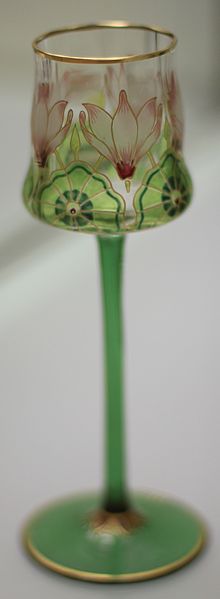 By Øyvind Holmstad (Own work) wikimedia.org By Øyvind Holmstad (Own work) wikimedia.org The distinctive designs of world renowned Czech artist Alphonse Mucha are a true representation of the Art Nouveau style. This undulating, sensuous artistic movement began in Europe in the late 1800’s and continued into the early years of the 20th century. Using nature’s graceful, flowing lines as it’s inspiration, the style infiltrated all the arts. From architecture to fashion, from everyday household items to the painting, sculpture and art glass, “The New Art” took the world by storm. Mucha was, and continues to be, one of the most recognizable proponents of the period and his homeland of the Czech Republic has respected and preserved many architectural representations. For more information: www.czechtourism/a/art-nouveau/ NOTE: All wines tasted at this event were provided by the sponsoring wineries. Please see my page ' Submissions, Reviews, Invitations & Disclaimers'. Many of us are ‘seasonal’ wine drinkers; in other words, we tend to drink cozy reds in the winter and lighter, more refreshing wines in the warmer months. Not only do these choices fit our mood but also the food selections we make. With this in mind, the Wine Review Council met on a classic Southern California July evening to sample a selection of wines perfectly paired to our relaxing poolside setting. All the samples hailed from California, from producers large and small, both established and new and the evening brought a few surprises. Both the first and last wines were versions of Viognier from one of the newer wineries in Southern California, Estate d’Iacobelli (pronounced “de Yack-oh-belly). This small establishment opened the doors of their tasting room this past May, located in the town of Fallbrook, located between San Diego and Temecula. The owners, Ronei and Lisa Iacobelli, are originally from Michigan, but their love of wine and Italian heritage brought them to the Temecula Valley in 1998 where they bought 20 acres and planted vines and olive trees. They decided, however, to build their tasting room on a beautiful hillside overlooking the Pala Mesa Golf course. The 2011 Estate d’Iacobelli Viognier is refreshingly fragrant with crunchy green pear, orange blossom and peach leading to a somewhat creamy palate with nectarine and lime zest on the finish. Not your typical Viognier, but delicious just the same. Retail $32.00. The companion wine, 2010 Estate d’Iacobelli “Sticky Fingers” LH Viognier was a terrific finish to the evening. Baked pear and nutty cashew mingled with lemon drop! The finish was not syrupy or overly sweet. It would make a perfect ‘little something’ after dinner. Retail $26.00. Both wines are available at the tasting room or through their website. Moving further north to Mendocino, we sampled three offerings from Moniker Wine Estates. A creation of three generations of the Thornhill family, the name and logo honor the multiple generations working together to create this premium line of wines. First up was the 2012 Moniker Chardonnay. The majority of the fruit was sourced from the Ribera vineyard located on the banks of the Russian River. The wine was barrel fermented for four months in American oak and, prior to bottling, blended with a bit of Viognier and more Chardonnay that was aged in French Oak. The result is a subdued and somewhat elegant Chardonnay, with soft apple, spicy cinnamon and notes of baked pear. The sur lie aging lends a soft mouth feel and good acidity keeps the finish fresh. Retail $23.00 Pinot Noir is always a great choice for summertime cuisine and the first one we sampled was also from Moniker. The 2012 Monkier Pinot Noir is a blend of grapes harvested from three Mendocino vineyards located in Anderson, Redwood and Potter Valleys, aged in American oak for seven months. The wine is all red fruits – rhubarb, cherry and red plum, highlighted with notes of fresh tobacco and tealeaf. Retail $30.00 Our last selection from this producer was the 2011 Moniker Cabernet Sauvignon. Although I wouldn’t normally consider this variety as a ‘summer sipper’, one can never say no to a California Cab! This bottling received Double Gold at the 2014 San Francisco Chronicle Awards. Aged for fourteen months in three year old French oak barrels, the wine lets the fruit do the talking. Black cherry, spicy plum and vanilla notes on the nose and palate linger on to the finish. This wine would definitely benefit from some more time in the bottle to fully show itself. Retail $30.00 From newer wineries on to a familiar name in the pages of California wine history: Wente Vineyards. Founded in 1883, Wente is the oldest continuously family owned winery in the United Sates. They began with 47 acres, planted by founder C.H. Wente and have now grown to 3000 acres, still in the Livermore Valley AVA. The Wente family have always contributed to the growth of the wine industry: first to put the grape variety name on the label, founders of the California Wine Institute and of course, the development of the now prolific Wente Clone of Chardonnay. They were honored as the American Winery of the Year in 2011 by Wine Enthusiast Magazine and in 2010 became a Certified Sustainable Vineyard, part of their “Family for the Future” campaign. To be honest, I had not tasted any of their wines for a very long time. Call me a snob, but I just hadn’t. I was in for a pleasant revelation. We first sampled the 2012 Wente Riva Ranch Chardonnay. This is part of the “Heritage Block” Series utilizing grapes from vineyards named after some of the pioneers of Wente winemaking. They are located in the Arroyo Seco region –considered one of the prime Chardonnay areas since the 1960s. The grapes were fermented in a combination of French, American and Eastern European barrels and stainless steel. The result is a tasty, New World Chardonnay. Vanilla beans, soft toast, baked apples with nutmeg and hints of tropical pineapple. Retail $22.00 The second sample from this historic producer was the 2012 Wente Morning Fog Chardonnay. Named after the cooling mist that flows from San Francisco Bay over the vineyards of the Livermore Valley, the wine is aged half in stainless steel and half in new French, American and European oak barrels. All the wine is aged sur lie for seven months. Elegant and enticing soft apple, lemon curd and spicy ginger show on the nose and palate with soft toasty, brioche, peach and applesauce lingering on the finish. Part of the ‘Vineyard Selection’ Series. Retail: $12.00 Our third and last taste of Wente was red - the 2012 Wente Reliz Creek Pinot Noir. The fruit once again is sourced from the vineyards of Arroyo Seco in Monterey. The soil here is gravelly loam with shale and limestone, lending structure and minerality to the wine. The wine spends twenty months in a blend of French and European neutral oak. The lovely cherry red hue matches the perfumy nose filled with cherry, black raspberry, and toast. The palate is deeper with notes of raspberry preserve, dark strawberry and earthy note of kirsch. The finish is clean with touches of white pepper. All in all, a feminine, Old World influenced Pinot. “Heritage Block Series” Retail: $28.00 At the end of each Wine Review Council tasting, we all rank the wines according to our personal preferences. For once, the votes were all swayed in one direction: the Wente Way! First place went to the Wente Reliz Creek Pinot Noir, with the Morning Fog and Riva Ranch Chardonnay’s sliding into second and third. Varietal character, value for money and food compatibility lead to most of our conclusions, So, until next time, happy sipping, whatever the season. NOTE: All wines tasted at this event were provided by the sponsoring wineries. Please see my page ' Submissions, Reviews, Invitations & Disclaimers'.
|
AuthorWine lover, educator and writer. Archives
March 2017
Categories
All
|

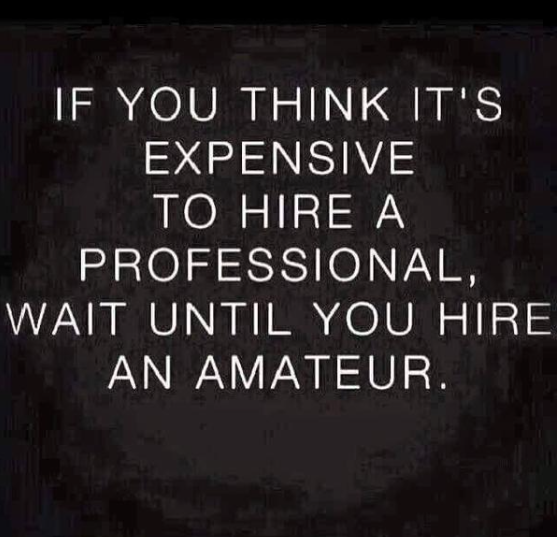


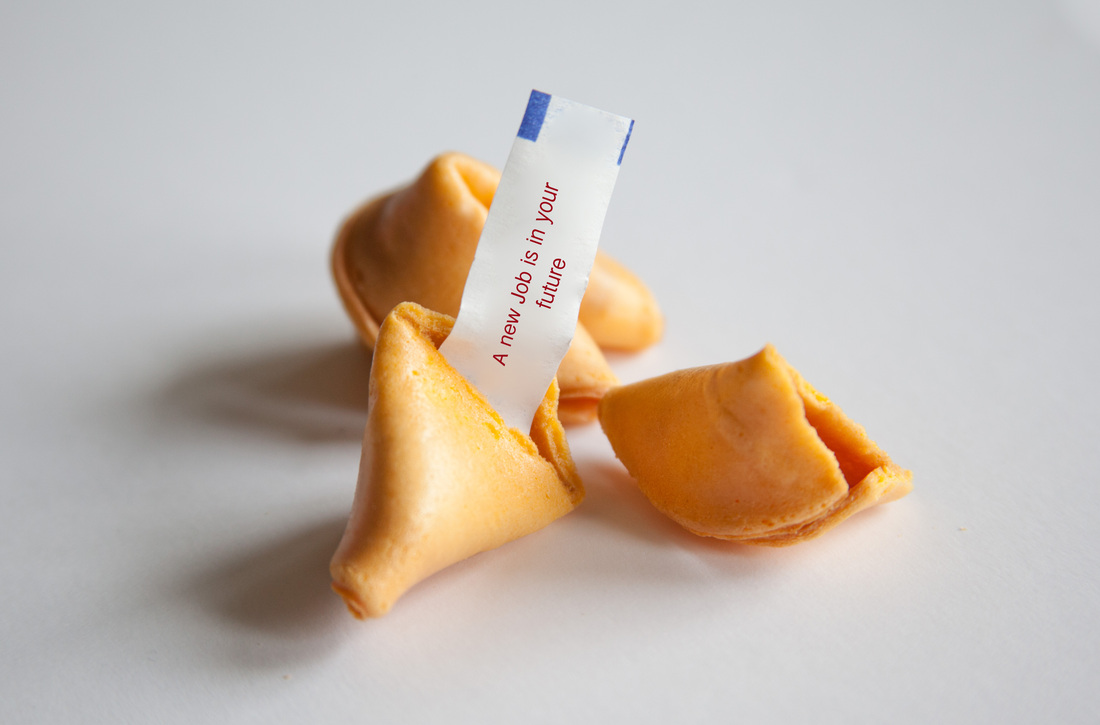





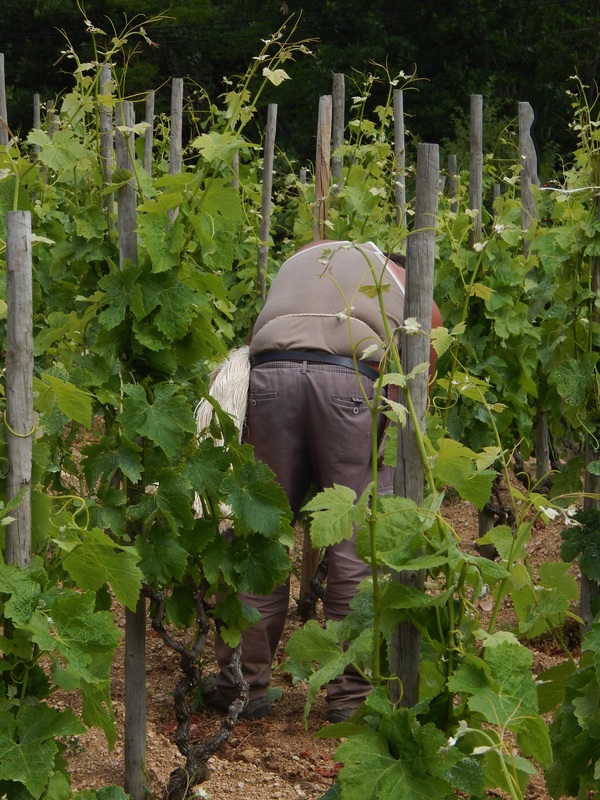








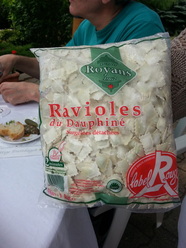



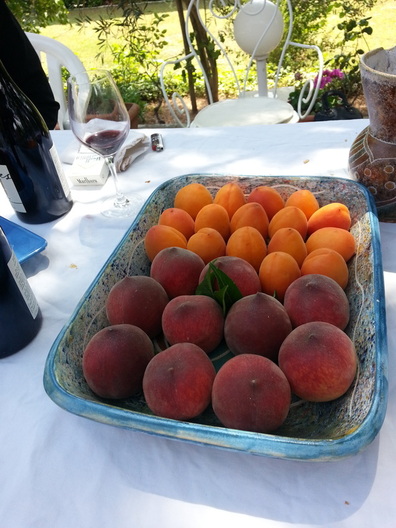
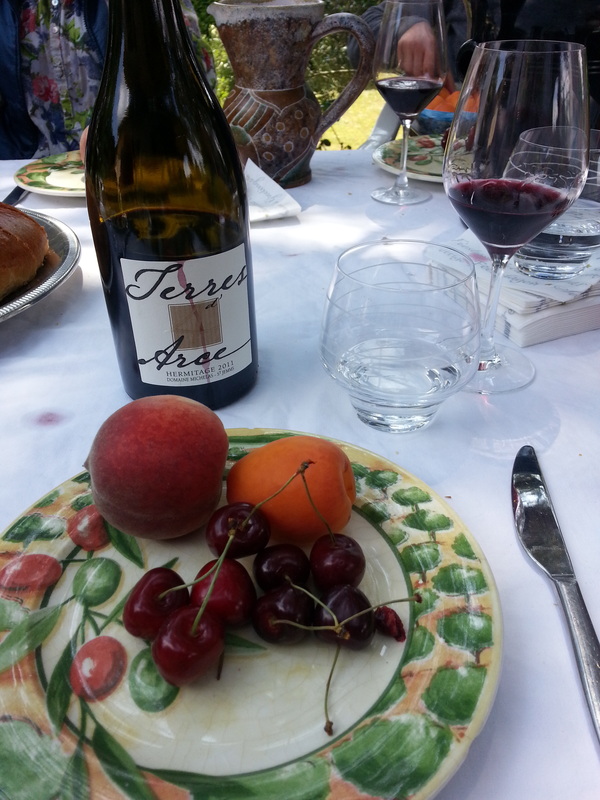



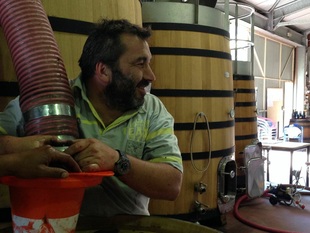

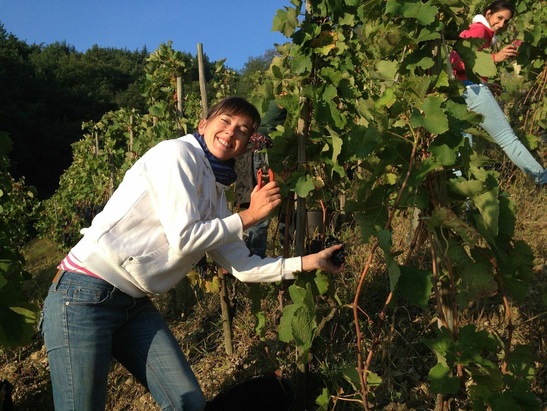

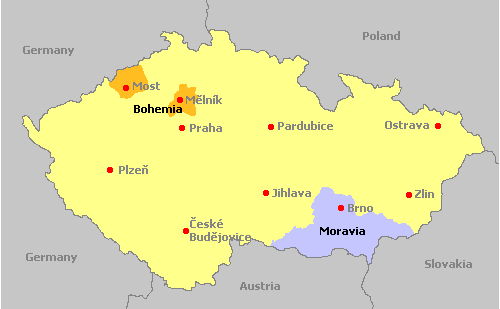

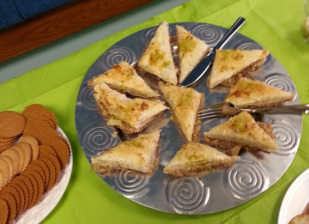

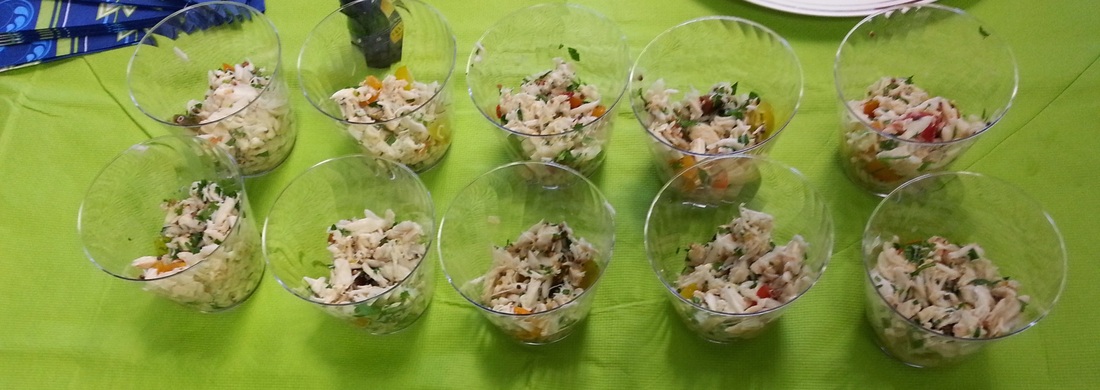




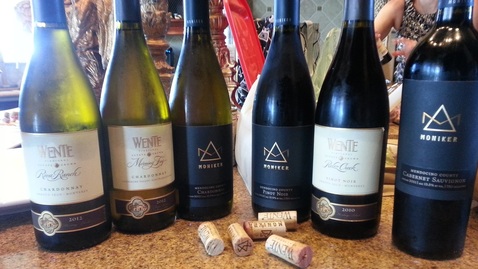


 RSS Feed
RSS Feed

